We haven’t had any snow for two weeks – so I think spring has come! And it seems like all the spring flowers are blooming at once.
I went for a walk on my friend Jackie’s land down the road, and visited her Pasqueflowers. There are many more than last year, and they’re growing farther down the hill. I’ve started trying to take more pictures of flowers with pollinators – so here are two of the Pasqueflowers with some small bees.
Pasqueflower (Anemone patens)
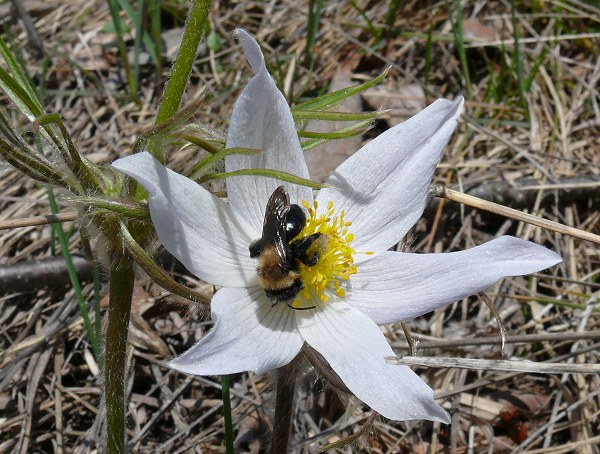

There are so few flowers blooming at this time of year, that when I do see flowers, they almost always have insects on or around them.
Since there’s been so much publicity about the problems beekeepers have been having with honeybees, there’s been more attention paid to the role that native bees play in pollination of both flowers and crops.
Honeybees are non-native bees that live in large groups, so they can be moved around to where they are needed to pollinate crops. Native bees tend to be solitary, so they can’t be used commercially, but they are still very useful for pollination. Audubon Magazine had an interesting article on native bees in their latest issue.
Here are some more of the flowers blooming at the farm right now.
Pussy toes (Antennaria neglecta)

Jack in the Pupit (Arisaema triphyllum)
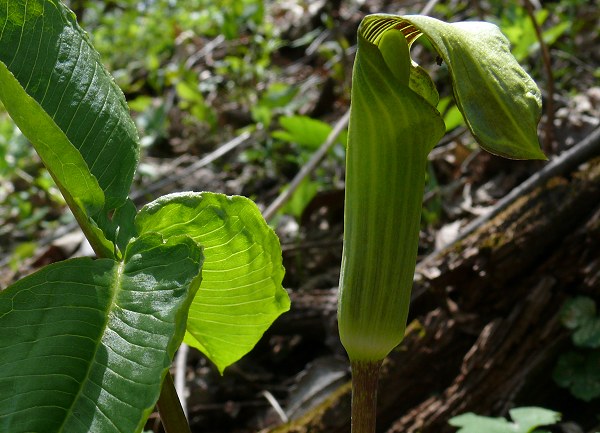
Marsh Marigolds (Caltha palustris)

Wood Betony (Pedicularis canadensis)
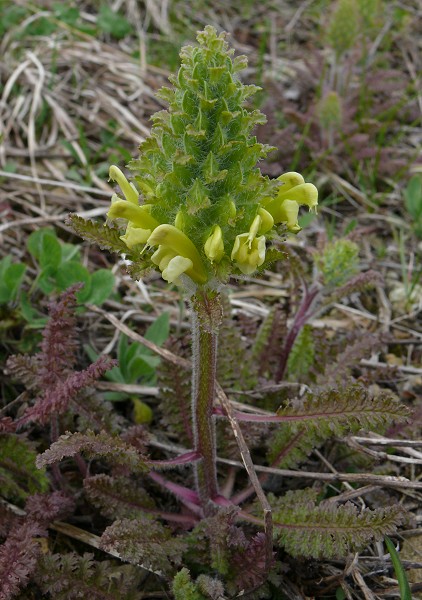
and a close-up
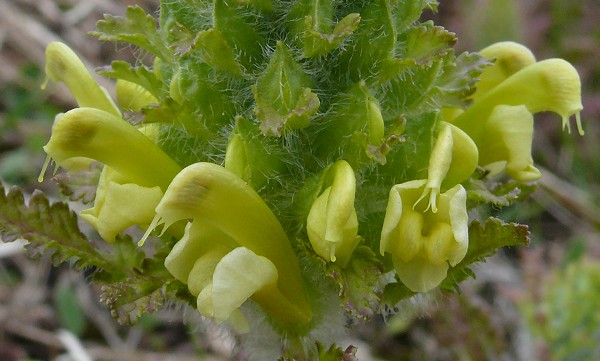
Wood Betony is in the same family as Snapdragons, and the flowers look very similar.
Prairie Violet (Viola pedatifida)

Sand Violet (Viola affinis)
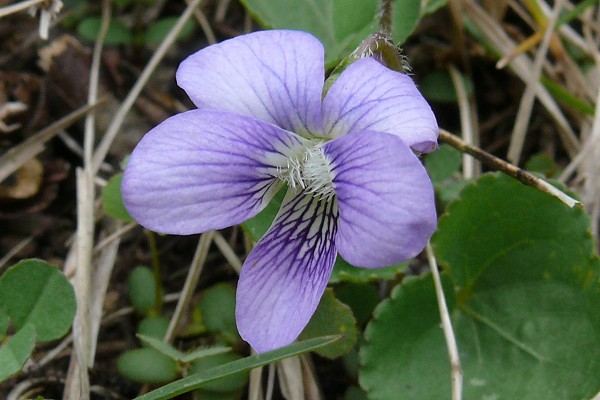
This is a new species for the farm, but only because I’ve never spent the time to really key out the common woodland violets before this. There are two species of blue violets (V. affinis and V. sororia) that grow in our woods.
Wild Ginger (Asarum canadense)

Serviceberry (Amelanchier laevis)

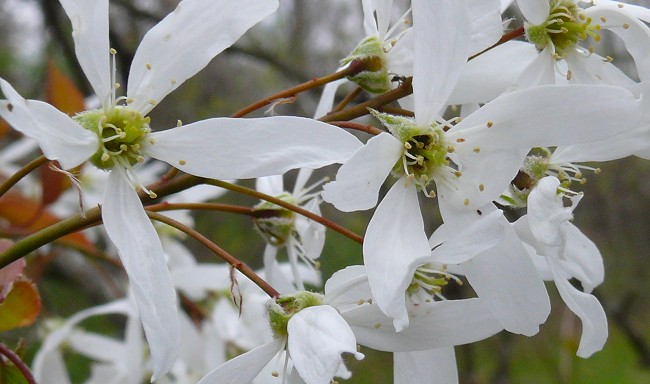
Serviceberry with a bee
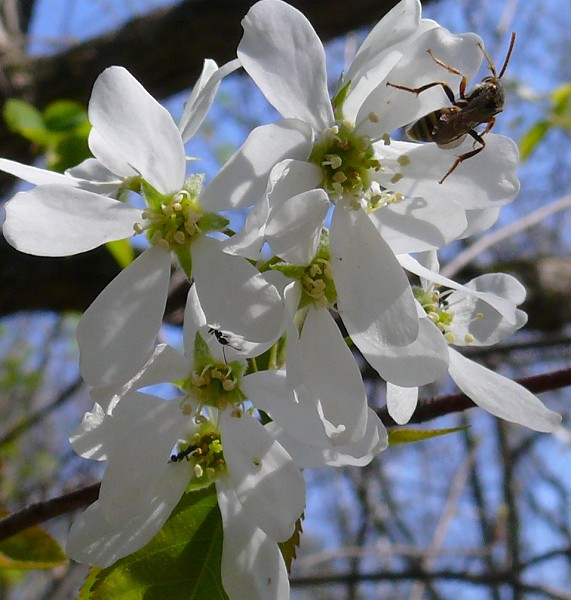
Rue Anemones (Thalictrum thalictroides)
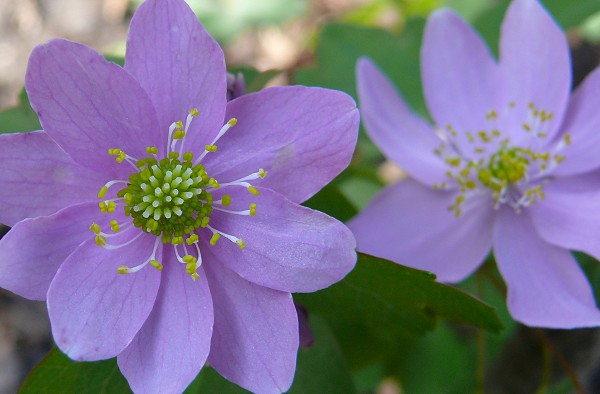
Wood Anemones (Anemone quinquefolia)
These were growing on the north-facing slope of the Knife Edge.
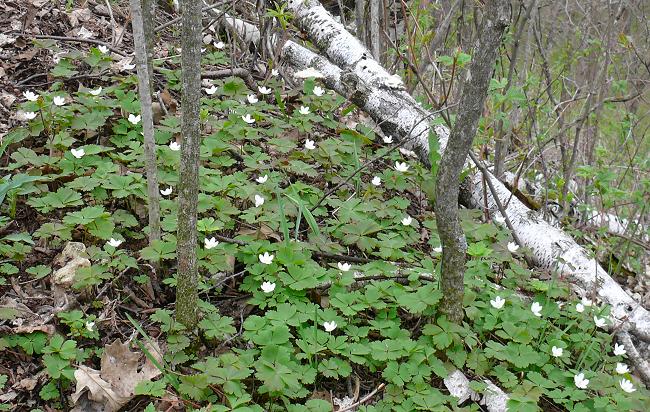

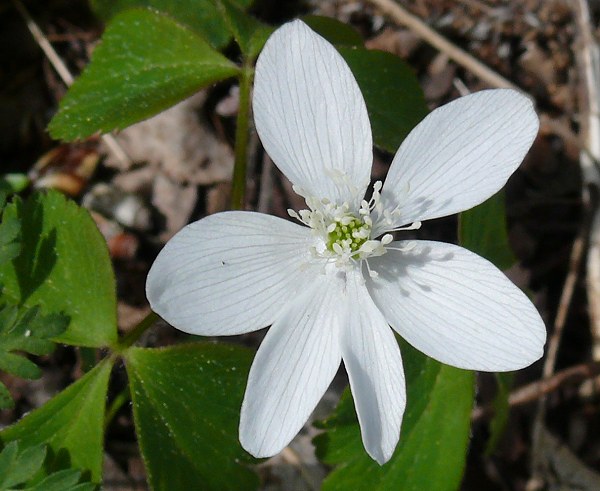
Bellwort (Uvularia grandiflora)

Small-flowered Buttercup (Ranunculus abortivus)
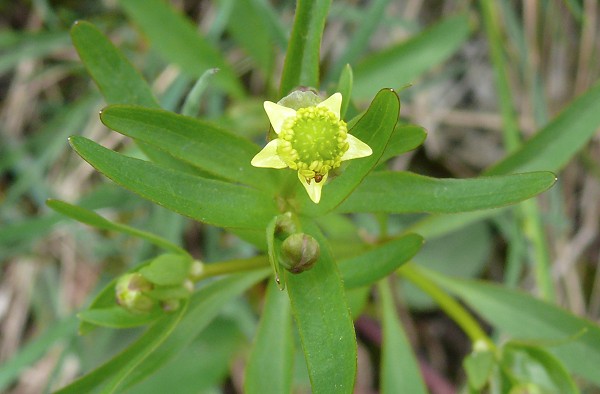
Birds Foot Violet (Viola pedata)
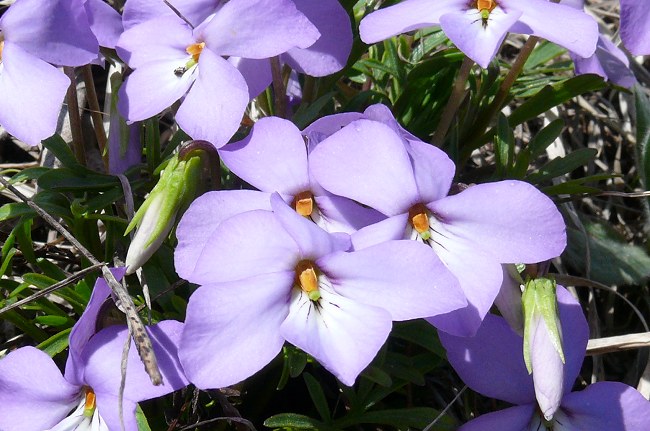
Hoary Puccoon (Lithospermum canescens)
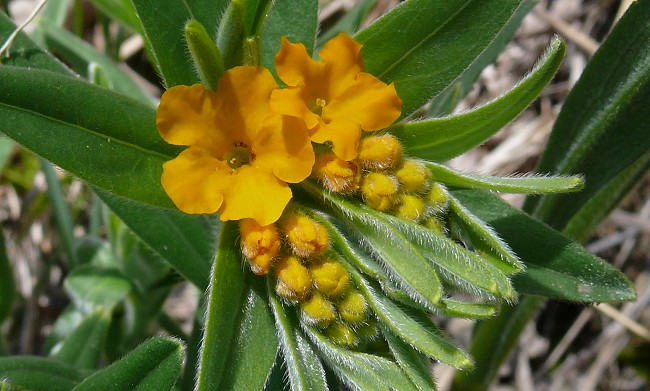
The ferns are starting to unfurl in the woods.
Maidenhair Fern and either Lady Fern or Wood Fern
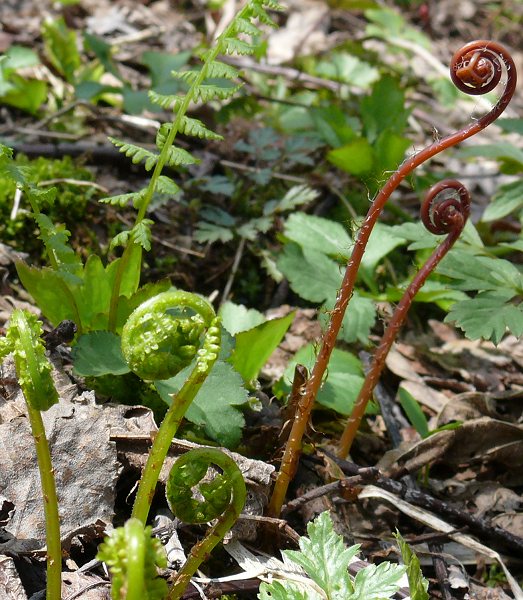
Ostrich Ferns on Starflower Hill

I found a new plant that I’ve never found here before, and it turns out to be a county record – Nodding Trillium. The flower isn’t quite out yet – when it’s actually in bloom, the flower will nod down below the leaves.
Nodding Trillium (Trillium flexipes)

These are the beginnings of Red Maple fruits.

Dandelions are blooming in the prairies, but there are fewer now that the prairie plants have gotten taller. There are still plenty of blossoms in the mowed paths.
The Narrows with Dandelions
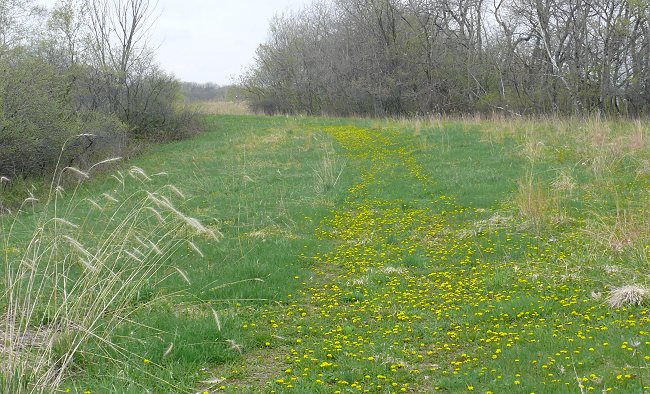
I’ve been girdling birches, to see if we can kill birch trees without having to cut them down. We’re hoping they will die and then fall by themselves – the way the aspen do – which would be a much safer and easier way to get rid of them. When I girdle a birch, the sap comes pouring out of the cut.
This is the way the trees look after they’ve been girdled.
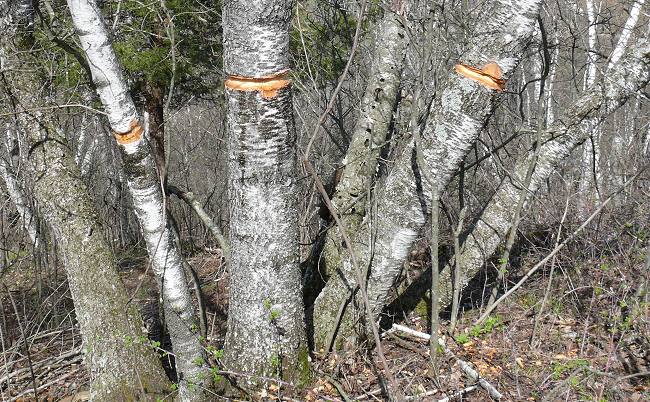
And this is the girdle.
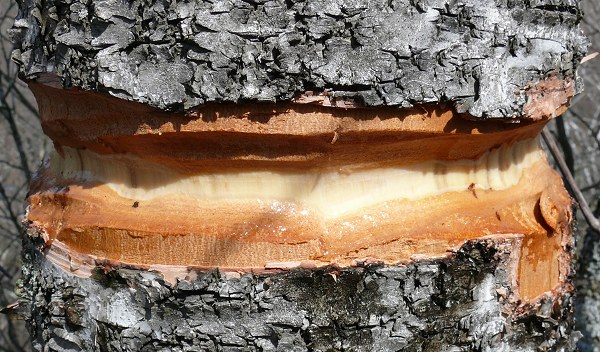
I sat on First Burn Prairie for a while and watched some Chickadees and a Yellow-rumped Warbler sipping the flowing sap.
Yellow Rumped Warbler
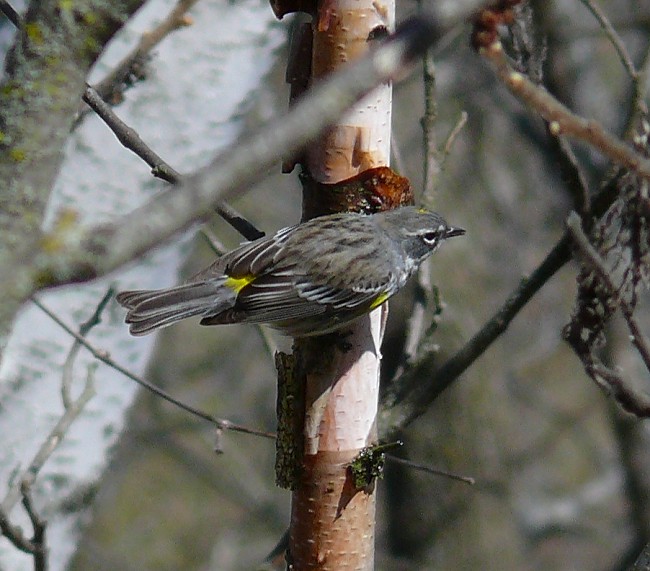
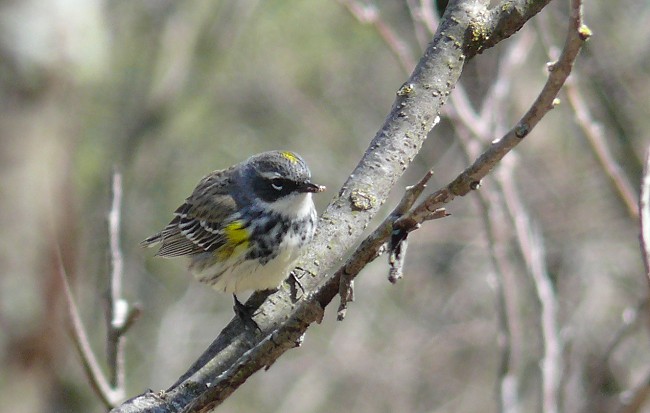
The snapping turtle is back in our neighbors’ pond this year. It was gone completely last year – the frogs had an easy year. But the same turtle – or one that looks just the same – is back.

Hundreds of tiny black tadpoles are swimming around at the edges of the pond – hopefully they’re too small to interest the turtle.
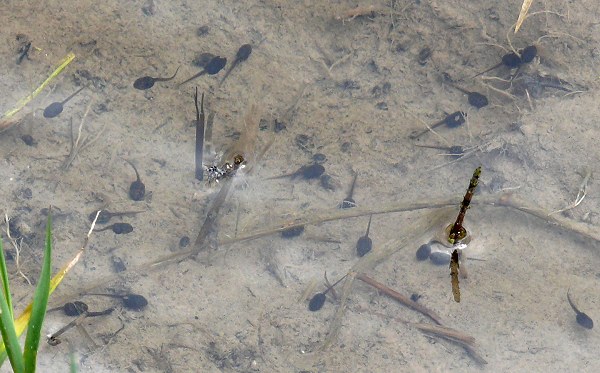
I walked in some woods that I haven’t explored much before. It’s always fun to find new places on our own land! It’s a very densely wooded east-facing slope. It looks like it was clear-cut a long time ago, and the slash was left to rot. The floor of the woods is covered with old mossy trunks and stumps, and the living trees are almost all Box Elders that are about the same age. I found a few young oaks, and a few small birches, but otherwise it’s a monoculture of Box Elder. It’s pretty to look at, but not very diverse.

The floor of the woods has lots of Wild Geranium – not blooming yet – and Yellow Violets.
Yellow Violet (Viola pubescens)

I’ve been dreading finding Garlic Mustard on our land. Garlic Mustard (Alliaria petiolata) is a very aggressive non-native invader that has been spreading from south to north in Wisconsin. I’ve seen it growing thickly just down the road from us, but I’ve only found it in a few small places on our land. This week I found a larger patch. It’s at the edge of the Narrows Prairie, and spreading into the woods. I spend a few afternoons pulling all the plants I could find.
Here’s the patch – fortunately I found it just before it started blooming.

This is an individual plant.
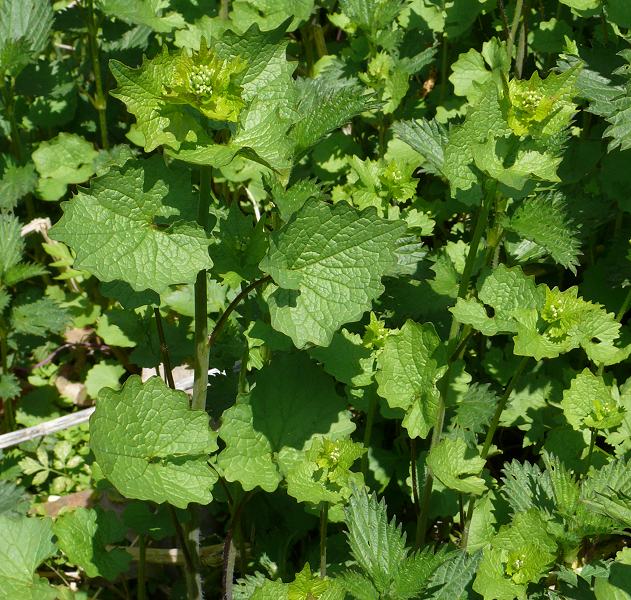
I really don’t want it to get established, so I’ll keep checking on it, and removing the new plants.
I found a pair of mating Cabbage Whites in Honeybee Prairie – Jackie’s one year old planted prairie. It was a cool day, and they weren’t moving much, so I was able to get very close.

